Artist John Costin shares a collection of highly detailed, life-size etchings of birds in their natural habitats. See more by visiting his website.
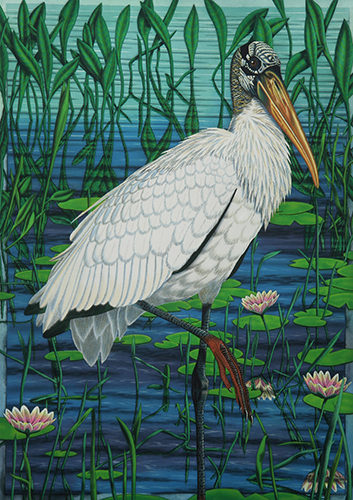
“Woodstork” (depicted life size) original hand painted etching using 3 plates, 24″ x 34″
I think I was born with a box of Crayolas in my hand. From an early age, artmaking and visual expression were in my genetic makeup. In kindergarten, while others were painting pretty pictures, I would create colorful costumes by cutting out painted images and attaching them to my clothes with push pins. I was a headstrong, rowdy, uncontrollable kid probably influenced by life experiences at the time.
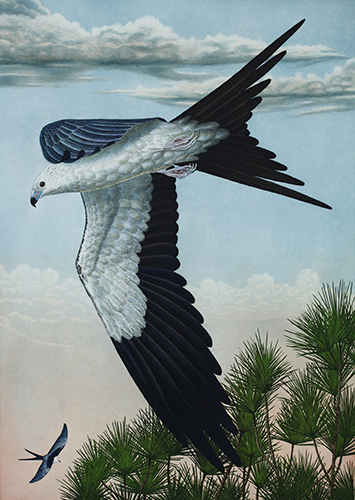
“Swallow Tailed Kite” (depicted life size) original hand painted etching using 4 plates, 24” x 34”
Through my adolescent years my interest in science and math escalated, while artmaking remained a constant. I was a chess-playing insect collector. I kept a pet praying mantis holed up in an oversized detergent box with a cellophane top. Because of her slow-motion body movements, she was an excellent model for life drawings.
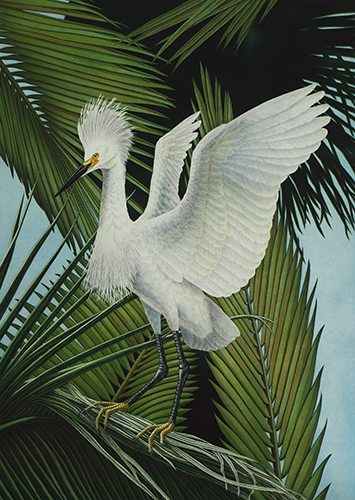
“Snowy Egret” (depicted life size) original hand painted etching using 3 plates, 24” x 34”
I lived in Detroit in the sixties. It wasn’t exactly a birder’s paradise, but the few birds I did see sparked a flame that continues to this day.
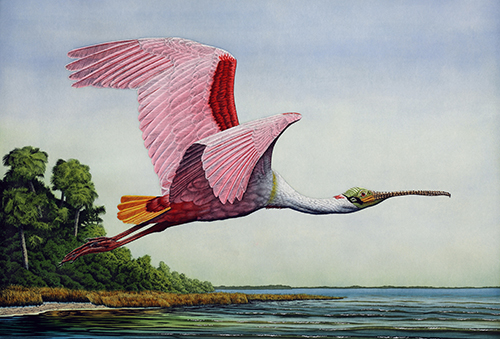
“Roseate Spoonbill in Flight” (depicted life size) original hand painted etching using 4 plates, 44” x 30”
If I were to describe my interest in birds, it would consist of a “flock” of adjectives like wonderment, magical, historical, evolutionary, intricate, poetic, insightful, emphatic, environmental, systematic, aesthetic, colorful, visual, genuine and elucidative, to name a few.
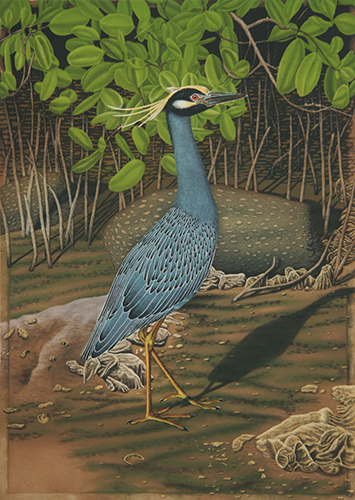
“Yellow Crowned Night Heron” (depicted life size) original hand painted etching using 4 plates, 24” x 34”
Birds are balls of feathers, bones, brains and history that gracefully ignite my passion for the natural world. They not only captivate me as a precious life order, but also engage my imagination with their form and color. The environments that I create in my art for these birds blend a practical space in which they are generally found with color, form, texture and composition. This is all designed to make an engaging image.
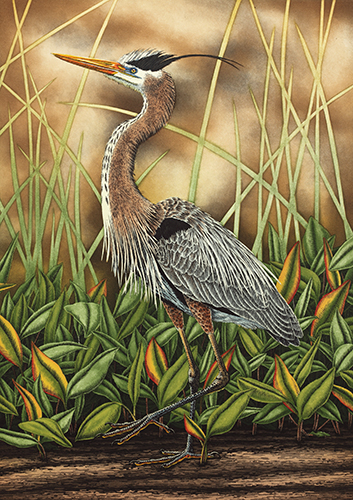
“Brief Spectacle” original hand painted etching using 4 plates, 13” x 17”
My primary medium is etching, the antithesis of modern life where most products are mass-produced for mass consumption, then discarded in a landfill. I was drawn to this process like a moth to the light while attending the University of South Florida.
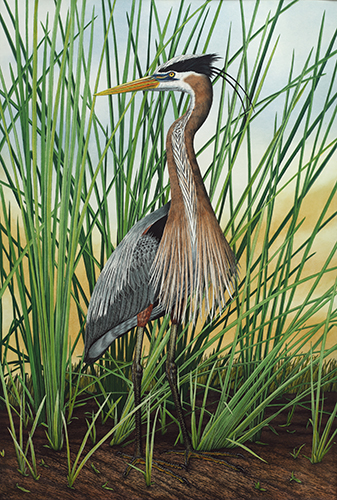
“Pensive Great Blue” (depicted life size) original hand painted etching using 3 plates, 30” x 44”
Etching is an ancient art form. It was developed around 1500 as an alternate image-making process for artists. It’s a hands-on technique where the surfaces of metal plates are etched with acids, creating a relief texture. That texture holds the magic of becoming a printed image. It’s a complex merger of art and science. Considering my background in electrical engineering and logic, it was the perfect medium for me to pioneer.
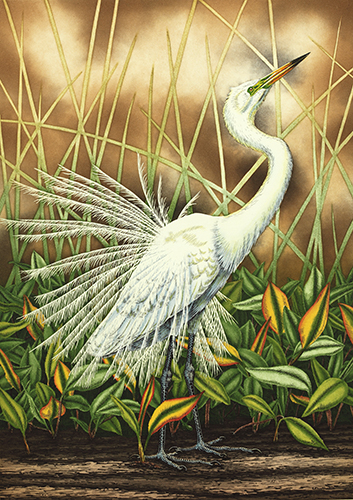
“Radiant Landscape” original hand painted etching using 4 plates, 13” x 17”
My etchings are complicated. It’s like blindly building a house with only a vaguely finished concept. The process is fraught with unpredictable twists and turns and hair-raising falls that turn into jarring “aha” moments. I’m a color pusher, transforming three to four plates with a dozen or so inks in combination with watercolor into an etching that sings.
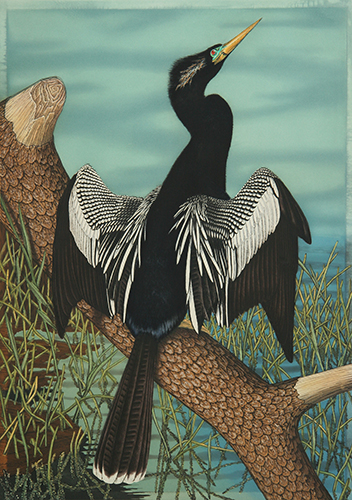
“Anhinga” (depicted life size) original hand painted etching using 3 plates, 24” x 34”
JPEGs and photographs don’t do justice to the range of values I explore. Peers in my field who view my work generally have a “Wow” reaction, even if they don’t like birds. They also appreciate the fact that I frequently create life-size etchings of my subjects.
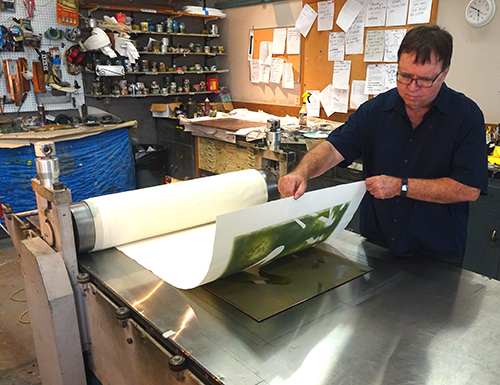
Artist John Costin in his studio pulling an etching
I don’t even remotely consider myself a wildlife artist. Instead, I see my pieces as visual portraits of birds. It’s my desire to subtly imbue my subjects with personality, which begs the viewer to connect with the subjects and discover something new they have not noticed before. I call this the process of discovery.
Artist John Costin invites you to follow him on Instagram and Facebook.



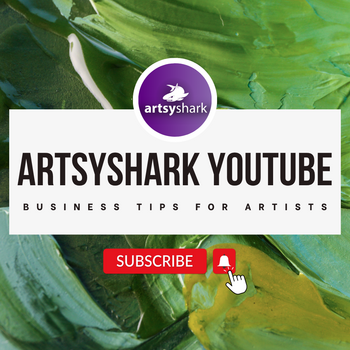
I really like the detail and color in each portrait of your birds. The backgrounds are an are beautiful the way they surround each one.